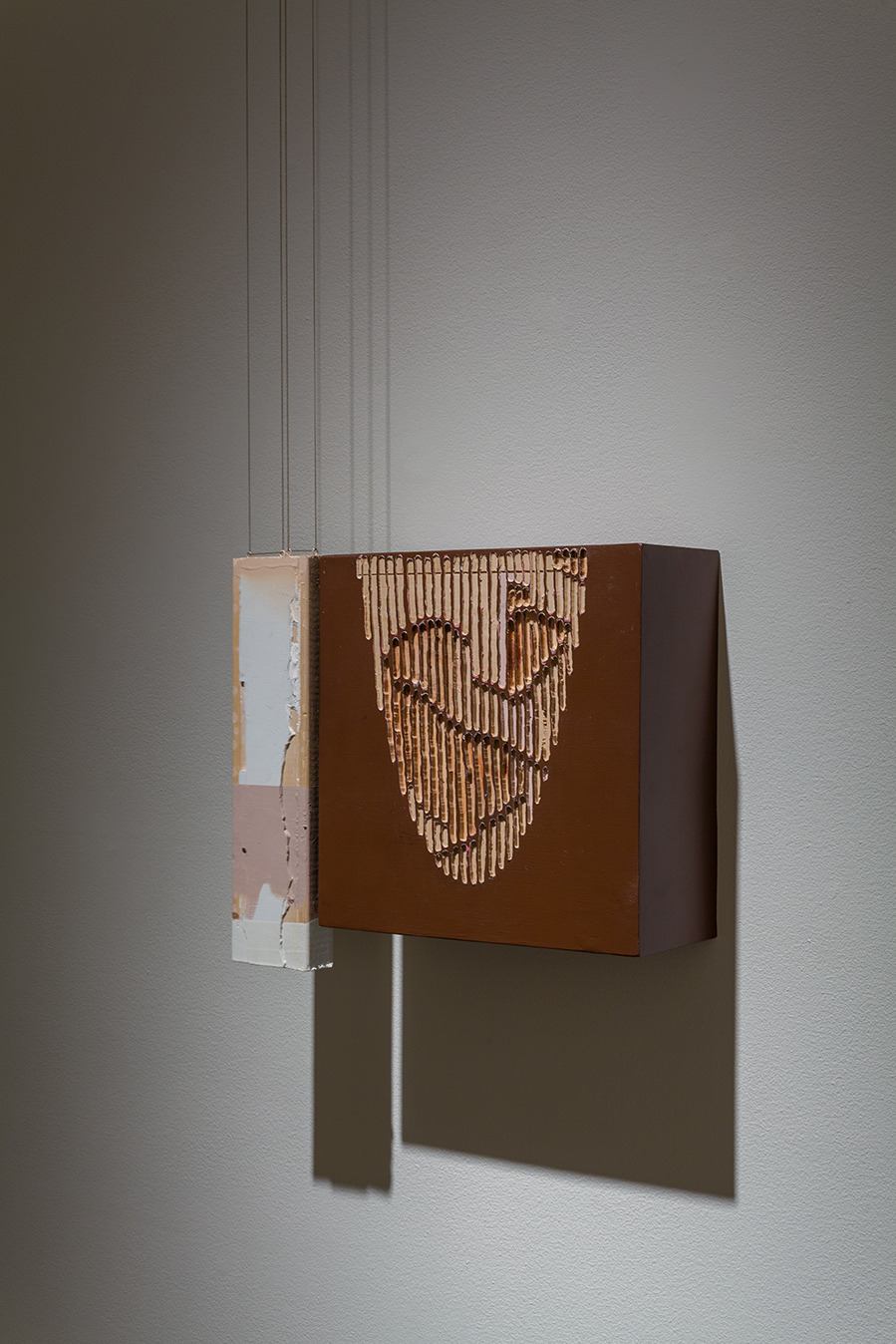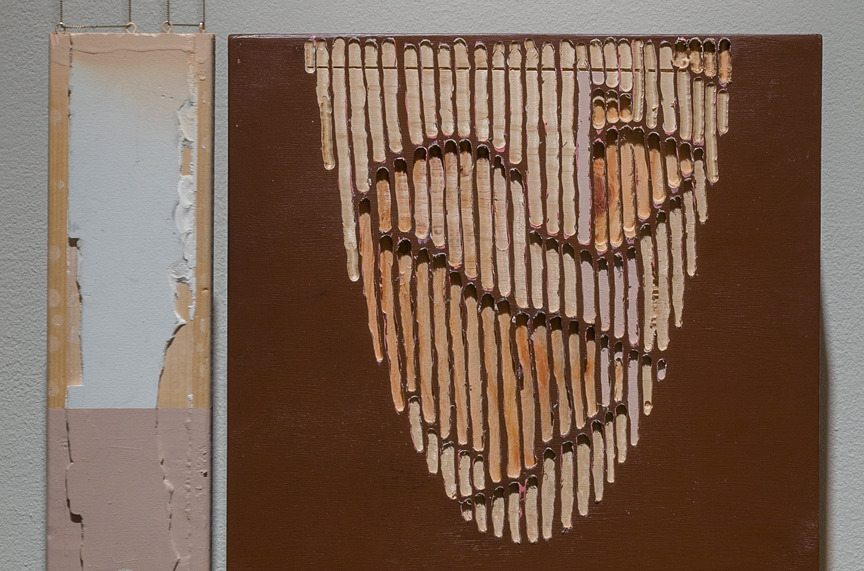

Multi-disciplinary artist Alison O'Daniel (filmmaker, sculptor and performance artist) will be participating in tonight’s Rogue Wave artist talk, August 1, 6:30pm. As a preview to tonight’s event, she shared insight into one of her wall reliefs titled The Lights Come On in Stages (pictured above). This work, along with 3 more wall reliefs, as well as her film The Tuba Theives, Scene 29: The Plants are Protectedare featured in our Rogue Wave 2013 group show, on view through August 23rd.
______________________________________________________
“I’ve been making a series of objects and writing a screenplay in response to listening to musical scores by three composers - Ethan Frederick Greene, Christine Sun Kim, Steve Roden. In 2011, I finished my first feature film, Night Sky, a film that explored sound and silence as prominent characters within a film narrative. Half of my cast and crew were Deaf or hard of hearing and I am hard of hearing as well. Currently, I am working on a film called The Tuba Thieves. After my first film, I knew that I wanted to start with listening. I wanted to work with composers whose approach to making music engaged the other senses. I provided these composers with references to respond to. Instead of them creating music to accompany a film scene, I would write, direct, edit the film and build objects to accompany the music they made for me.
Steve Roden is a painter and sound artist based in Los Angeles. I love his paintings and came to his music second. Around the time that I was hatching this plan to make objects and write a film to music, I saw him perform at LACMA. His process was sensitive and tuned in to the analog instruments he was using, but also the people in the room. Afterward, he spoke about using specific forms of notation, and translating systems into scores that affect his painting or music. I identified with his intuitive and subjective interpretation of visual and aural stimuli into work that spans vision and hearing. I asked him if he’d be interested in creating a score for my film. He watched Night Sky and agreed to it, and so I set about crafting a list for him to respond to: the patterns a Zamboni makes on the ice as it cleans away the snow, the artwork of Sophie Taeuber-Arp, David Wagoner’s poem Water Music for the Progress of Love in a Life-Raft on the Sammamish Slough, the Foucault Pendulum at the Griffith Observatory, and finally the architecture of the Maverick Concert Hall in Woodstock, NY. I sent this list to Steve and not more than 30 seconds passed when he wrote me back wondering if I knew about the Maverick Concert Hall. After sheepishly admitting that I just really liked the architecture and knew nothing else, he told me that John Cage premiered 4 minutes and 33 seconds in August of 1952 at the Maverick, AND that Steve had just finished a year long project of performing a daily meditation of 4'33” AND that Steve had recently performed there. 4’ 33" is Cage’s seminal “silent” music piece, and the serendipitous synchronicity of my having not known this important fact, Steve’s relationship with 4’ 33" and my own engagement with working with silence as a character was absolutely lovely.
Steve made me an incredible piece of music – 35 minutes of quiet, cyclical clicks and calm tones and muted colors with bright flashes. I’ve been listening to the scores non-stop for almost a year now. I continue to experience changes in the music and discover new things I hadn’t heard before, but several of my responses and interpretations have remained consistent: Steve’s score feels wintery and there are many cycles, the same colors and shapes appear in my ears and certain parts of the score activate my imagination so that I hear scenes or see interactions and start to imagine characters and relationships. For example, one section of Steve’s score conjures a Zamboni driver performing his first rounds of cleaning the ice in the morning before the skaters and their parents and coaches have arrived. While he follows the particular patterns around the ice, the lights overhead are turning on in stages, getting brighter and brighter. This scene made its way into the screenplay and I plan to shoot this in the future. Around the same time that I wrote this scene, I made The Lights Come On In Stages, the brown block with the hanging 2x4. Decisions about color, patterning, to go into the wood with a router, were all translations of sounds from all three scores, but it was that particular section of Steve’s score that made me imagine this scene.
Steve’s score is not heard in the Rogue Wave show.* But if you look hard at the objects, you might imagine what it sounds like.
*Currently, I have a solo show up at Samuel Freeman Gallery in Culver City. The three scores are on an MP3 player behind the desk. You can ask to listen to them while viewing the objects in that show, and then if you are so inclined come back to L.A. Louver and try to remember the music as you look at the other pieces there.“
- Alison O'Daniel
